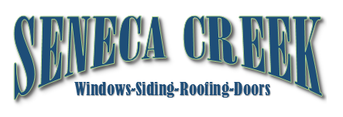Germantown Roofing: Article About Shallow Roofs Explained
A tile is defined as a piece of baked clay that is used to form one unit of a roof covering. Roofing tiles may be composed of clay, concrete, slate or metal. They are sometimes painted or glazed.
Question for the Germantown roofing company experts from Seneca Creek: What is a torch down roof?Torch down roofing is a type of material designed for flat or shallow roofs. Installers use propane torches to soften and melt the material into place. There are two types of torch down roofing, two-ply and three-ply.</p><p>Two-ply systems are composed of a base layer and a torch down layer. Three-ply systems have a base layer and two torch down layers, one of which has a granular surface.

When designing Germantown roofing, the most important aspect is the slope, also known as the pitch. This is the angle at which the roof rises from its lowest point to its highest. It influences the amount of interior space in a building, the style, drainage and the choices of materials used for the covering. There are four types of slope: flat, low, conventional and steep. A roof with a pitch of 3/12, or 14 degrees, is classified as a low slope roof.
Low-slope roofs are less expensive than steep roofs. They require fewer materials and they are easier to install, partly because they are easier for the workmen to walk on. Even the delivery of materials is simplified because they can be placed directly on top of the building, ready for the installer to begin work.
On the down side, shallow roofs are more prone to leakage because they tend to collect puddles of water. For this reason, they are found more frequently in regions where there is little rainfall or snow.
What materials work best on low-slope roofs, and which ones should the homeowner avoid? Conventional shingles simply do not work on a low-slope roof because the water does not drain fast enough. Metal, slates and concrete tiles are all suitable roof coverings for shallow roofs.
The roofing company experts at Seneca Creek Home Improvement of Germantown can assist you with any questions regarding roofing, doors or siding.
There is a type of fired, S-shaped clay tile, called a pantile, that is popular in certain parts of the United Kingdom, particularly on the southeastern coast and in Scotland.
For homeowners who have their hearts set on shingles, there are measures that can be employed to get around the water-loving nature of a shallow roof. By employing strategies like adding a water-impermeable membrane, installing drain pipes or choosing high-drainage materials for the covering, a low-slope roof should last every bit as long as any other roof.
There are five basic types of low-slope roofing membranes or systems, most of which have three components in common. The most important of these is one or more layers of weatherproofing. The second is reinforcement, which adds puncture resistance, stability and strength. The third component is surfacing. Surfacing protects the reinforcement and weatherproofing components from weather and sunlight and may also improve resistance to fire and hail and increase solar reflectivity.
Shallow, or low-slope, roofs are comparatively inexpensive to install and suit some building styles more than others. While they are less waterproof than steeper roofs, there are measures that can be employed to counteract this drawback.






